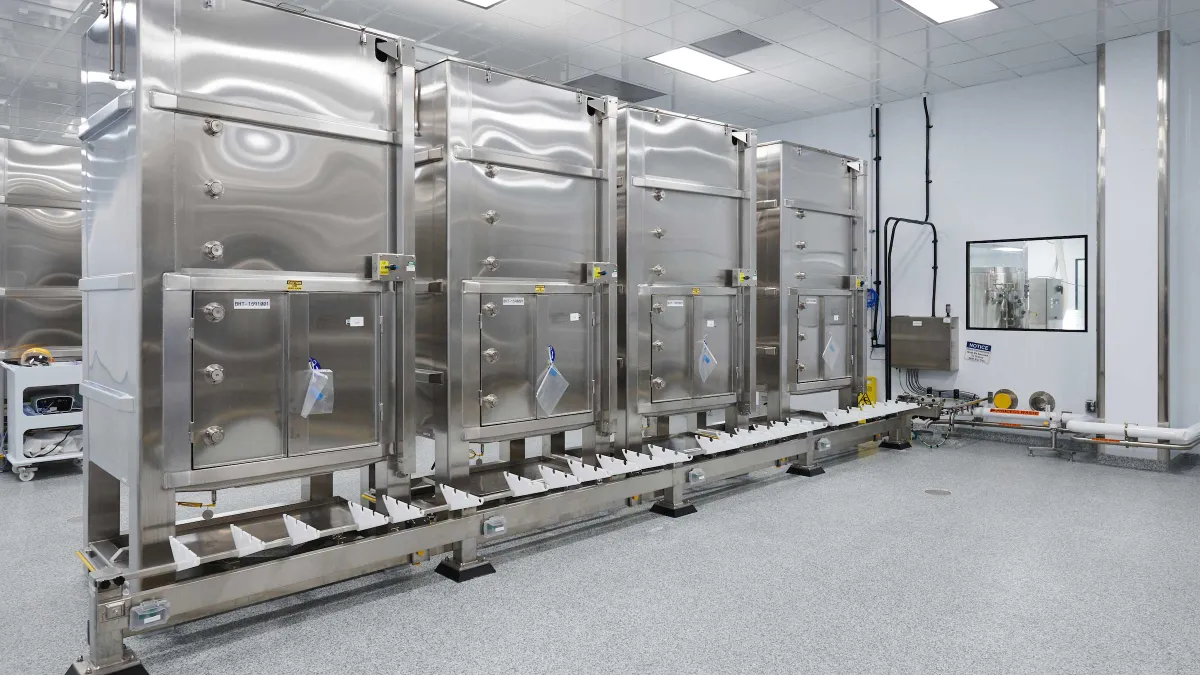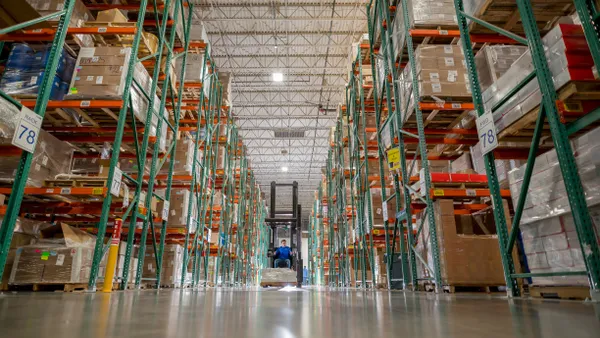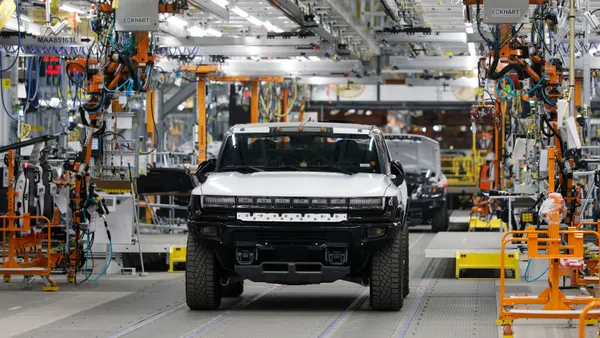Dive Brief:
- Sanofi's new manufacturing plant in Framingham, Massachusetts, will produce 80% less carbon dioxide emissions compared to the company's first-generation facility and will reduce water and chemical usage by 91% and 94%, respectively, according to details released by the company.
- The company's new facility opened last month and uses continuous manufacturing, a process that promises to speed up drug development. It called it "one of the world’s first," in the release.
- Sanofi says the facility will connect research and development processes with production, which it says will speed up the time to market for new medication.

Dive Insight:
Efficiency and substantially faster speed are often cited as the main benefits of continuous manufacturing.
"The gains in environmental impact are based on a number of factors," a Sanofi spokesperson explained in an email to Supply Chain Dive. "The application of continuous processing further enables reductions in [equipment] size and scale as the process can run 24 hours a day and 7 days a week to maximize the production capabilities of smaller unit operations."
The expansion of the processes allows Sanofi to use small equipment that results in "significant reduction" in the energy, chemical and water used in the cleaning process, the spokesperson said.
Continuous manufacturing is just one way to manufacture pharmaceuticals — or anything else. The alternative that has been more common in the pharmaceutical space is batch manufacturing.
An example of continuous manufacturing is a wastewater treatment facility where dirty water is always coming in, cleaning is always happening and clean water is continuously being emitted. Batch processing instead follows a multi-step process where manufacturing stops between each step.
"Most processes that process a large volume of material typically tend to operate in a continuous manner because it's much more efficient," Piero Armenante, a professor of chemical and materials engineering at the New Jersey Institute of Technology, told Supply Chain Dive in an interview.
But the pharmaceutical industry doesn't operate on a large scale. It operates on a milligram scale. "Which means that, intrinsically, the manufacturing process could be continuous but has to be continued on a small scale," Armenante said.
Cleaning is one of the important steps of batch processing in pharmaceutical manufacturing, Armenante said. "During that time the reactor is just sitting there, you're doing something to clean it up or to prepare, but you're not using it, which is not true if you have, say, a continuous process," he said.
These are benefits Janet Woodcock, the director of the Center for Drug Evaluation and Research at the Food and Drug Administration (FDA), was already citing back in 2011.
"It is predicted that manufacturing will change in the next 25 years as current manufacturing practices are abandoned in favor of cleaner, flexible, more efficient continuous manufacturing," Woodcock said at a 2011 conference, according to an FDA presentation.
While the pharma industry had been slow to adopt the continuous manufacturing model, Sanofi's new plant is a signal the shift is underway and those adopting the process are seeing benefits.
Sanofi is not alone in investing in this manufacturing model. Art Hewig, the executive director of pivotal drug substance process development at Amgen, said the biotech began overhauling its manufacturing process in 2010, according to notes from a continuous manufacturing workshop published by The National Academies of Sciences, Engineering and Medicine.
The business case for continuous manufacturing will differ for each business. But it can result in it "shrinking the manufacturing footprint [resulting] in a significant reduction in capital investment and the time needed to deploy a new process. It also enables miniaturization and intensification of process workflows," Hewig said, according to the Academies' notes.
For now, though, the use of continuous manufacturing in the pharmaceutical space is not common, Armenante said. The processes of overhauling the supply chain for a highly regulated industry like pharmaceuticals is no easy task.
"You will see more and more of these processes becoming become more continuous," Armenante said. "There's definitely movement in that direction in trying to essentially have the whole train of operations strung together so it can generate a continuous process."
This story was first published in our weekly newsletter, Supply Chain Dive: Operations. Sign up here.














